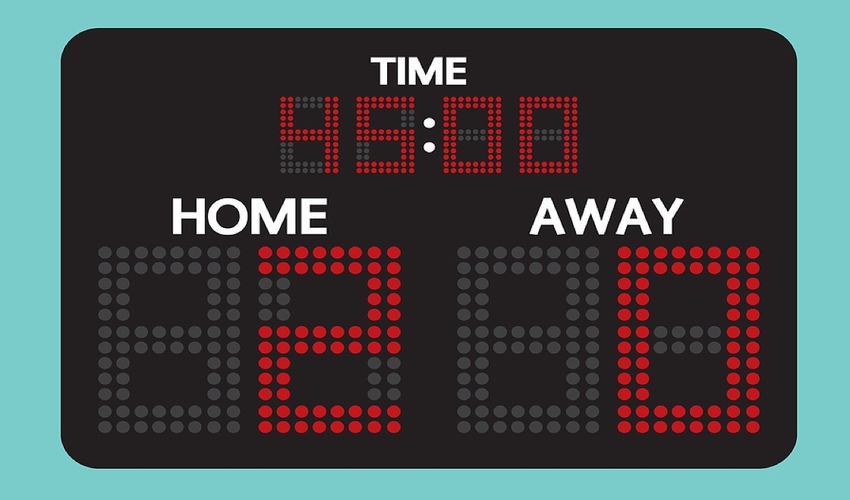 The most successful teams in the history of the Premier League have been based around the foundation of a solid defence. Think of any top-class team that has won the title, whether it be Manchester United under Alex Ferguson, Liverpool under Jürgen Klopp or even Leicester City’s improbably crowning as champions in 2016, and you’ll see that they each had a brilliant goalkeeper and a talented defensive unit behind them.
The most successful teams in the history of the Premier League have been based around the foundation of a solid defence. Think of any top-class team that has won the title, whether it be Manchester United under Alex Ferguson, Liverpool under Jürgen Klopp or even Leicester City’s improbably crowning as champions in 2016, and you’ll see that they each had a brilliant goalkeeper and a talented defensive unit behind them.
Yes, attackers get all the glory. You are far more likely to but a compilation of the best goals ever scored than you are one that focuses on the best saves or the most bone-crunching tackles. Yet if a team is able to limit the opposition to zero goals then they’re automatically better placed to win the match than if they concede a goal and the attack needs to score two if they hope to claim all three points.
This is also an important question for many betting markets. People will often bet on things like both teams to score, correct score and win-to-nil bets to increase their odds. The question is, how often do teams manage to win to nil?
If you are interested in how often teams keep clean sheets, which is a slightly different question as it also includes draws, then see our dedicated page.
Looking At 5 Seasons Worth Of Data

In order to get a real sense of how often teams are likely to win to zero, regardless, of whether they’re home or away or whether it’s a specific team that we’re looking at, we’ve delved into five seasons’ worth of data.
More specifically, we’ve looked back at the 2017-2018, 2018-2019, 2019-2020, 2020-2021, and 2021-2022 campaigns in both the Premier League and Championship, exploring how often scores to nil were registered.
| Season | Number Of 1-0s | Number Of 2-0s | Number Of 3-0s | Number of 4-0s | Number Of 5-0s | Number of 6-0s+ |
|---|---|---|---|---|---|---|
| 2017-2018 Premier League | 67 (17.6%) | 42 (11.1%) | 27 (7.2%) | 16 (4.2%) | 9 (2.4%) | 1 (0.3%) |
| 2017-2018 Championship | 99 (17.9%) | 76 (13.8%) | 35 (6.3%) | 11 (2.0%) | 5 (0.9%) | 1 (0.2%) |
| 2018-2019 Premier League | 55 (14.5%) | 67 (17.6%) | 22 (5.8%) | 11 (2.9%) | 7 (1.8%) | 1 (0.3%) |
| 2018-2019 Championship | 99 (17.9%) | 71 (12.9%) | 44 (7.9%) | 11 (2.0%) | 0 (0%) | 1 (0.2%) |
| 2019-2020 Premier League | 55 (14.5%) | 57 (15.0%) | 29 (7.6%) | 15 (3.9%) | 7 (1.8%) | 2 (0.5%) |
| 2019-2020 Championship | 114 (20.7%) | 58 (10.5%) | 38 (6.9%) | 11 (2.0%) | 4 (0.7%) | 2 (0.4%) |
| 2020-2021 Premier League | 71 (18.6%) | 49 (12.8%) | 28 (7.3%) | 9 (2.3%) | 5 (1.3%) | 2 (0.5%) |
| 2020-2021 Championship | 123 (22.2%) | 79 (14.3%) | 33 (5.9%) | 8 (1.4%) | 4 (0.7%) | 2 (0.4%) |
| 2021-2022 Premier League | 65 (17.1%) | 46 (12.1%) | 29 (7.6%) | 14 (3.6%) | 8 (2.1%) | 4 (1.0%) |
| 2021-2022 Championship | 111 (20.1%) | 75 (13.5%) | 30 (5.4%) | 17 (3.0%) | 4 (0.7%) | 3 (0.5%) |
| Total Across Both Divisions & All Seasons | 859 (18.4%) | 620 (13.3%) | 315 (6.7%) | 123 (2.6%) | 53 (1.1%) | 19 (0.4%) |
As you can see, the more goals that are scored by a team, the fewer times they’re able to do so without conceding. It’s also interesting to note that there can be wide variance between seasons in terms of racking up specific score lines. Taking 1-0 as an example, there were 71 in the 2020-2021 season in the Premier League, but only 55 in both 2018-2019 and 2019-2020. Similarly, there were 99 in the Championship in both the 2017-2018 and 2018-2019 seasons but 123 in 2020-2021 campaign.
It seems as though it is not easy for a team to keep a clean sheet if they’re trying to score as many goals as possible, which is why the number of goals scored to nil drops off by about 200 or so per season. It’s also interesting to see how many times the Championship mirrors the Premier League in terms of the number of large score lines notched up. It’s also worth noting that the Championship tends to outscore the Premier League until we reach the point of very high scorelines.
In terms of the overall chances of winning to nil, whatever the score, taking the 4,660 games above 1,989 ended to nil, meaning around 42.6% of games end with one team not scoring a goal.
Percentage Of Games Ending To Nil

The figures are, in and of themselves, interesting enough. What might be helpful to find out is what percentage of games during a season might end by said score line. After all, if it’s not all that common occurrence then we’ll know that we’re asking a lot by regularly placing bets on matches to end that way.
There are 380 matches played during a Premier League season, compared to 552 in the Championship. That offers a total of 932 games played during each campaign across the top two divisions of English football. Here’s a look at the percentage of matches that finished by each score line during those five seasons, or 4,660 matches:
- 1-0: 18.43%
- 2-0: 13.30%
- 3-0: 6.75%
- 4-0: 2.63%
- 5-0: 1.13%
- 6-0+: 0.40%
As supporters, we tend to mentally favour the idea of our club outscoring the opposition and keeping a clean sheet.
In reality, across five season of the top two divisions in England, there was just shy of a 7% chance that the match would finish 3-0, for example, so picking correctly is very difficult.
Indeed, if you look at any winning score to nil then the 1,989 matches out of 4,660 finished that way is less than 50%, so a game is statistically more likely to see goals by both sides than not.
Home & Away

We know, then, how often each score line has been achieved over the five seasons in question, but what does the split look like when you’re talking about whether the home or the away team managed to notch the score line up? It’s easy to assume that it’s always the home team that gets the high score line, but does that reflect in the stats?
Let’s have a look, with the home score always being the first number.
| Season | 1-0 Split (H/A) | 2-0 Split (H/A) | 3-0 Split (H/A) | 4-0 Split (H/A) | 5-0 Split (H/A) | 6-0+ Split (H/A) |
|---|---|---|---|---|---|---|
| Premier League 2017-2018 | 44 / 23 | 27 / 15 | 15 / 2 | 9 / 7 | 9 / 0 | 0 / 1 |
| Championship 2017-2018 | 57 / 42 | 47 / 29 | 20 / 15 | 6 / 5 | 4 / 1 | 2 / 0 |
| Premier League 2018-2019 | 29 / 26 | 44 / 23 | 12 / 10 | 6 / 5 | 5 / 2 | 1 / 0 |
| Championship 2018-2019 | 55 / 44 | 50 / 21 | 22 / 11 | 8 / 3 | 0 / 0 | 1 / 0 |
| Premier League 2019-2020 | 33 / 22 | 32 / 25 | 19 / 10 | 12 / 3 | 5 / 2 | 1 / 0 |
| Championship 2019-2020 | 63 / 51 | 33 / 25 | 21 / 17 | 7 / 4 | 2 / 2 | 2 / 0 |
| Premier League 2020-2021 | 33 / 38 | 26 / 23 | 14 / 14 | 6 / 3 | 3 / 2 | 1 / 1 |
| Championship 2020-2021 | 64 / 59 | 46 / 33 | 22 / 11 | 3 / 5 | 3 / 1 | 2 / 0 |
| Premier League 2021-2022 | 37 / 28 | 28 / 18 | 18 / 13 | 7 / 7 | 4 / 4 | 3 / 1 |
| Championship 2021-2022 | 62 / 49 | 46 / 29 | 22 / 8 | 13 / 4 | 3 / 1 | 1 / 2 |
| Totals: | 477 / 382 | 379 / 241 | 185 / 111 | 77 / 46 | 38 / 15 | 14 / 5 |
| Percentage: | 10.2% / 8.1% | 8.1% / 5.1% | 3.9% / 2.3% | 1.6% / 0.9% | 0.8% / 0.3% | 0.3% / 0.1% |
A quick rule of thumb, then, is that teams are generally good enough to win games 1 or 2 nil either at home or away from home, but with a general advantage to the team playing at their own ground.
When you start to look at the larger score lines, however, the home team seems to boast a much bigger advantage.
If you’re planning on betting on a 5-0 or 6-0 score in a game then you’d be much better placing said wager on the team playing at their home stadium.